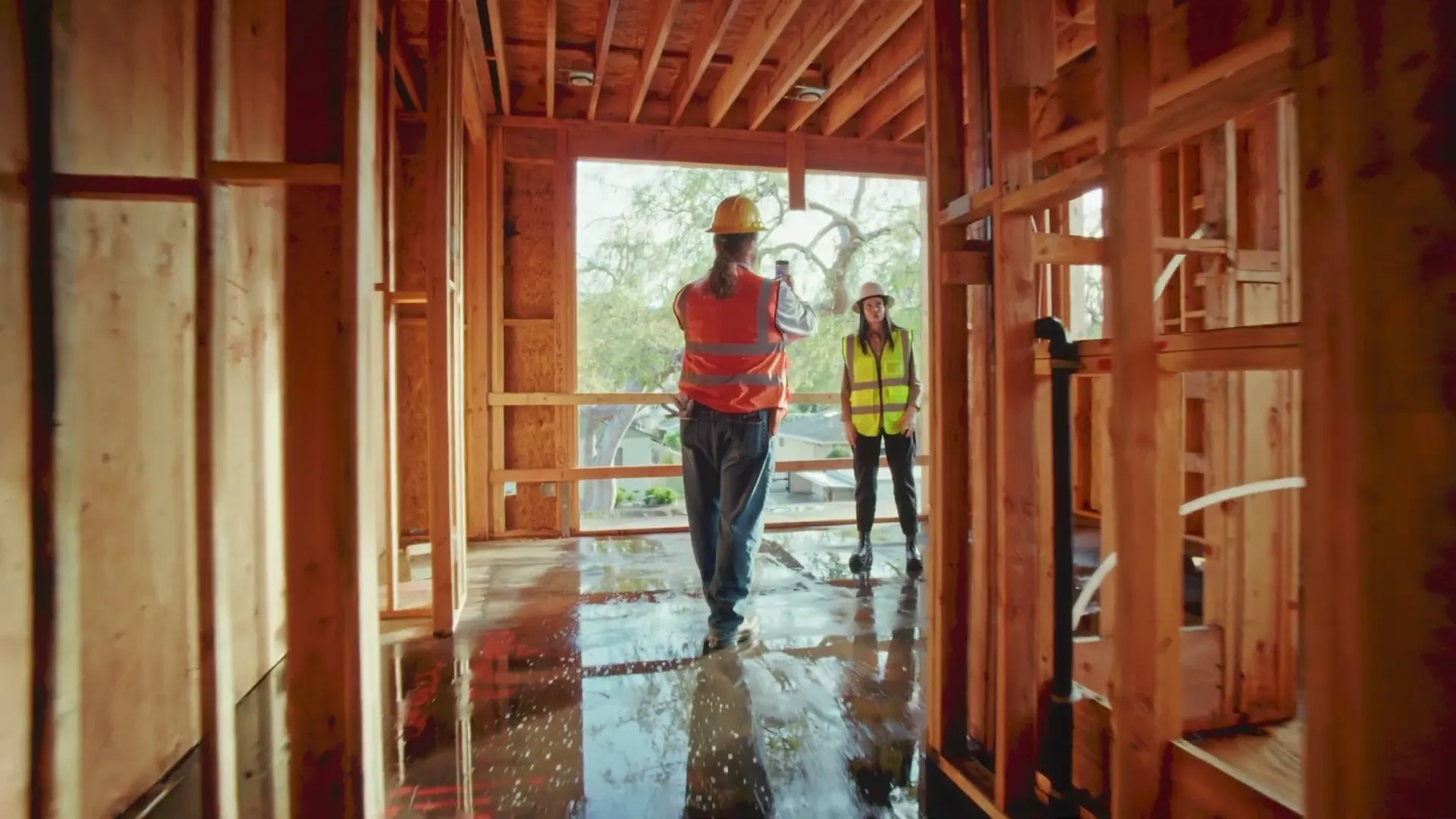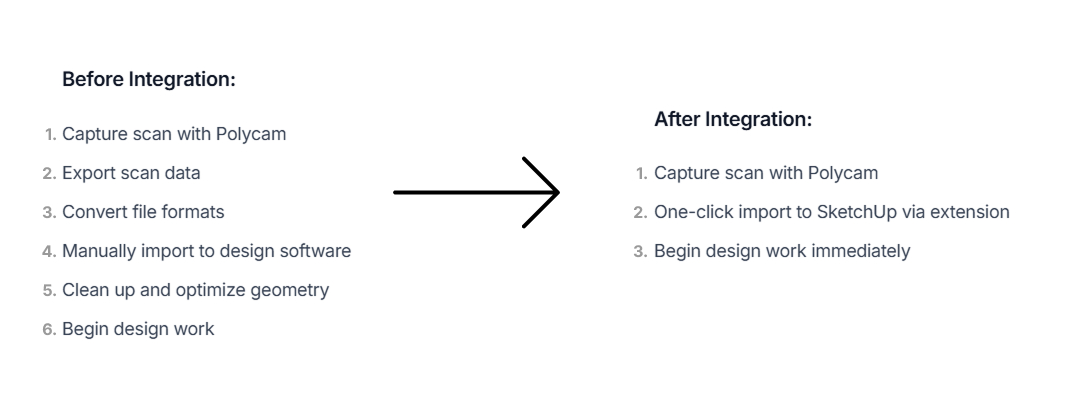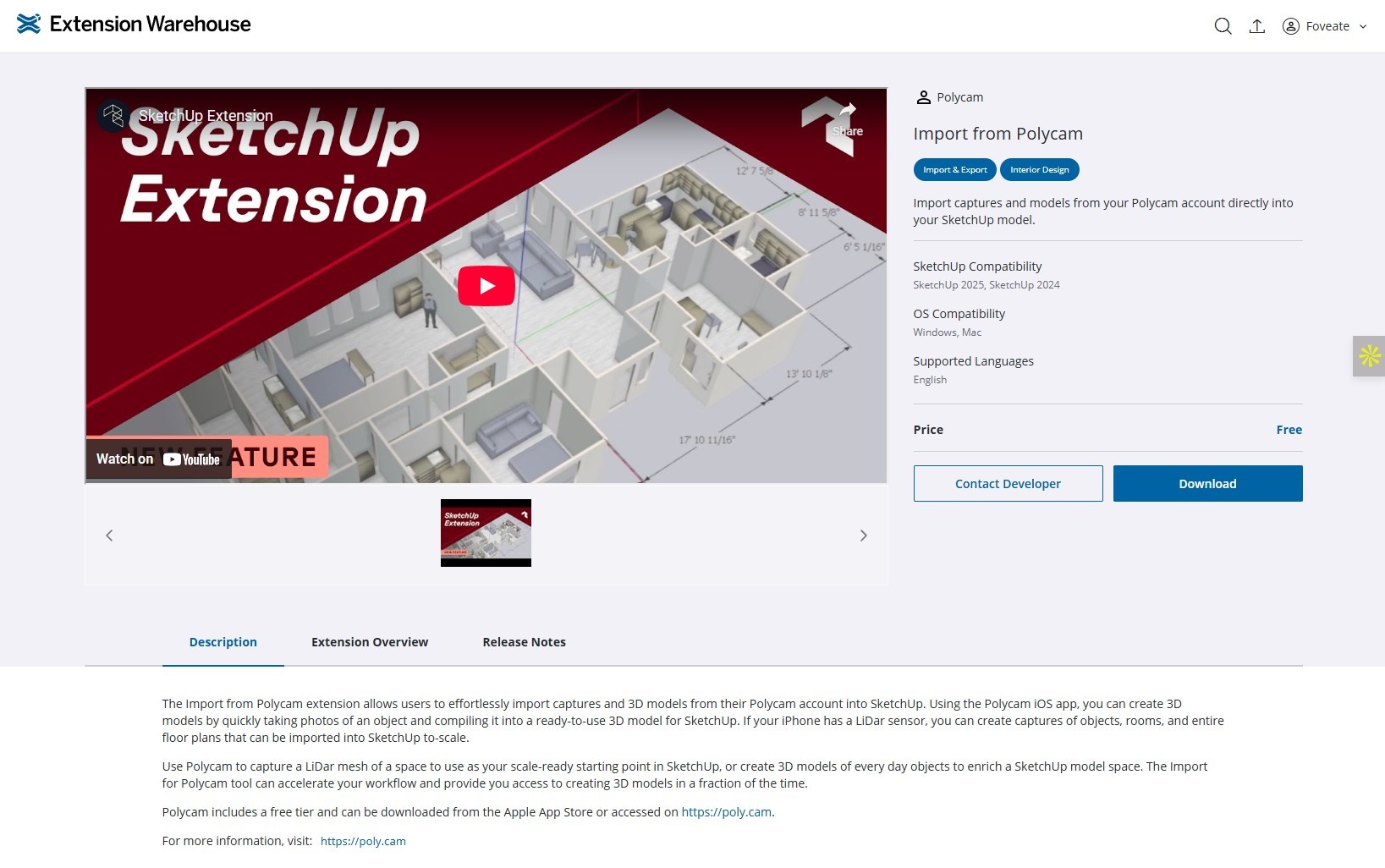Connecting the dots between Consumer 3D Scanning and Industry Standard workflows
Reality capture technology has democratized 3D scanning, making it accessible to professionals across the AEC industry. But Polycam, an innovative reality capture startup, recognized that accessibility was only part of the equation—they needed to create seamless workflows that would help their users extract maximum value from their 3D scans.
This is the story of how Foveate's consulting and strategy services helped Polycam develop and launch a game-changing integration that connects 3D scanning directly to one of the industry's most popular design tools.

The Challenge: Bridging the Gap Between Scanning and Design
Polycam had successfully democratized 3D scanning with their intuitive mobile app and powerful processing capabilities. Users across the AEC industry—from small contractors to large architectural firms—were capturing detailed 3D scans of existing conditions with unprecedented ease.
However, Polycam's team recognized a critical gap in their users' workflows: while capturing scans had become simple, getting those scans into popular design tools remained complex and time-consuming.
Key Workflow Barriers:
- File Format Challenges: 3D scans often required complex conversion processes to work with design software
- Manual Import Processes: Users had to navigate multiple steps to bring scan data into their preferred tools
- Limited Integration: Popular design platforms lacked direct connections to reality capture workflows
- Adoption Friction: Complex workflows prevented many potential users from fully embracing 3D scanning
Polycam needed strategic guidance to identify the highest-impact integration opportunity and develop a solution that would truly serve their AEC user base.
The Solution: Strategic Consulting for Market Impact
Foveate's consulting and strategy services focusesd on helping Polycam identify and execute on the integration that would deliver maximum value to their AEC users.
Seamless workflow integration between Polycam's 3D scanning and SketchUp design environment - Watch Video
Our Strategic Approach:
- Market Analysis: Identified SketchUp as the most impactful integration target based on AEC adoption
- Workflow Design: Developed streamlined processes for bringing 3D scans into SketchUp
- Technical Strategy: Advised on extension development and user experience design
- Launch Planning: Coordinated timing with major industry events for maximum impact
The goal was to create a seamless bridge between Polycam's scanning capabilities and one of the most widely-used design tools in the AEC industry.
Results: Successful Launch at AIA Conference
The partnership with Foveate delivered a successful product launch that exceeded expectations:
Product Development Success:
- SketchUp Extension: Launched a custom extension enabling direct import of Polycam scans
- Streamlined Workflow: Reduced the scan-to-design process from hours to minutes
- Professional Quality: Delivered enterprise-grade functionality accessible to all users
- User Adoption: Achieved rapid uptake among existing Polycam users
Strategic Launch Impact:
- Perfect Timing: Extension launched just in time for the 2025 AIA Conference in Boston
- Industry Recognition: Garnered significant attention from AEC professionals
- Market Validation: Confirmed strong demand for integrated scan-to-design workflows
- Competitive Advantage: Established Polycam as the leader in accessible reality capture workflows
The Strategy Behind the Success
Our consulting approach for Polycam focused on identifying the highest-impact opportunity and executing a strategic launch that would maximize market penetration.
Key Strategic Decisions:
- Platform Prioritization: Chose SketchUp over other CAD platforms based on AEC market penetration
- User Experience Focus: Emphasized simplicity and accessibility over advanced features
- Timing Optimization: Coordinated launch with major industry event for maximum visibility
- Market Positioning: Positioned the integration as democratizing reality capture workflows
The strategy recognized that success would come from making 3D scanning workflows accessible to the broadest possible range of AEC professionals.
Democratizing Reality Capture Workflows
The Polycam-SketchUp integration represents a significant step forward in making reality capture technology truly accessible across the AEC industry. Users on Polycam's forum would complain about the difficulty in picking the right formats for import into SketchUp, and one user even remarked that he reverted to antiquated workflows like importing the data as a 2D DWG file due to the cumbersome nature of importing the correct 3D file format.
Workflow Transformation

This dramatic simplification removes barriers that previously prevented many professionals from incorporating reality capture into their standard workflows, cutting import time by 50%.
Industry Impact: Expanding Reality Capture Adoption
The successful launch of the Polycam-SketchUp integration has broader implications for reality capture adoption across the AEC industry.
Market Trends:
- Workflow Integration: Seamless connections between capture and design tools becoming essential
- Accessibility Priority: User-friendly solutions driving broader technology adoption
- Professional Quality: Consumer-grade tools achieving enterprise-level results
- Workflow Efficiency: Time savings translating directly to increased usage
The integration validates the market demand for simplified workflows that make advanced technology accessible to professionals at all levels.
 The Polycam SketchUp Extension received over 5000+ downloads its first week
The Polycam SketchUp Extension received over 5000+ downloads its first week
Lessons for Technology Companies
Polycam's successful integration provides valuable insights for other technology companies looking to expand their market reach:
Strategic Best Practices:
- User-Centric Focus: Prioritize user workflow needs over technical capabilities
- Platform Strategy: Choose integration targets based on market impact, not just technical compatibility
- Launch Timing: Coordinate product releases with industry events for maximum visibility
- Accessibility First: Design for the broadest possible user base rather than just power users
Development Approach:
- Workflow Optimization: Focus on removing friction rather than adding features
- Quality Standards: Maintain professional-grade quality even in simplified tools
- User Testing: Validate workflows with real users throughout development
- Market Feedback: Use industry events to gather feedback and refine positioning
Looking Forward: The Future of Reality Capture
The success of the Polycam-SketchUp integration points to broader trends in reality capture technology adoption across the AEC industry.
Future Opportunities:
- Additional Platform Integrations: Expanding seamless workflows to other popular design tools
- Enhanced Capabilities: Adding advanced processing and analysis features
- Workflow Automation: Further streamlining the scan-to-design process
- Collaborative Features: Enabling team-based reality capture workflows
Helped market the Extension via their Livestream as well.
Conclusion: Strategy Meets Execution
Polycam's story demonstrates the power of strategic thinking combined with focused execution. By identifying the right integration opportunity and executing a well-timed launch, they successfully expanded their market reach and delivered genuine value to AEC professionals.
The Polycam-SketchUp integration isn't just a technical achievement—it represents a fundamental shift toward making reality capture technology accessible to professionals who previously couldn't justify the complexity of traditional workflows.
For other technology companies, Polycam's experience shows the importance of user-centric strategy and the value of expert consulting in identifying and executing on high-impact opportunities.
The future of AEC technology lies in solutions that combine powerful capabilities with intuitive workflows. Polycam's success with their SketchUp integration provides a roadmap for achieving both accessibility and professional-grade results.
Ready to expand your technology's market reach? Learn how Foveate's consulting and strategy services can help you identify and execute on high-impact opportunities.
About the Author

Kitae Kim
Experiential architect and co-founder of Foveate, passionate about spatial storytelling and empowering creative professionals through technology.
